Looking for a few natural, safe and effective ways to get rid of poison ivy plants on your property once and for all!
The poison ivy plant, with its long trailing vines and signature 3 leaf foliage pattern is a sight no one wants encounter around their home. Not only do the leaves of this dangerous plant contain a sap that a large percent of the population is highly allergic to, its berries, roots, and all other parts of the plant contain it as well!
Along with poison sumac and oak, poison ivy’s sap can create an itchy, red rash when it comes in contact with skin. Although not every human being is allergic to its sap, nearly 85% of the population is. And can it ever cause all kinds of serious issues for those who are!
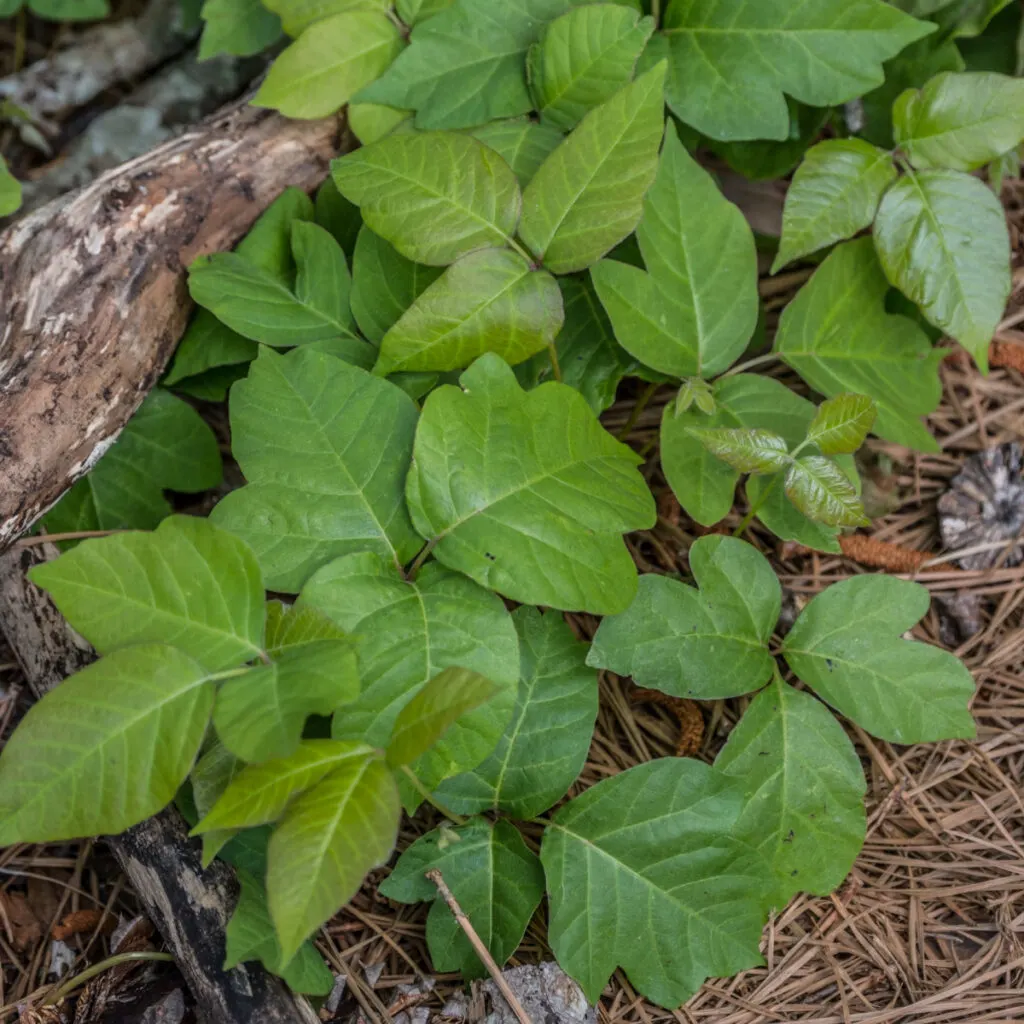
Poison ivy is a perennial vine that is hard to eradicate no matter the time of the season. And it doesn’t go dormant when it comes to causing rashes. In fact, as long as any part of the plant is around, you have a chance of contacting the poison ivy sap.
What’s worse is that even your dog or cat can rub up against the sap and transfer it to you or your family. And if the vines, leaves or roots of ivy happen to end burning on a bonfire, fire pit or brush line fire, breathing in the smoke can cause serious respiratory issues as well.
How To Get Rid Of Poison Ivy – Safely
There are a lot of methods for trying to eliminate poison ivy. Some involve using harsh chemicals and herbicides that can not only kill any plant material they come in contact with, but also leave dangerous residues behind that can be harmful to children, adults and pets as well.
The good news is that there are safe, effective and more natural ways to eliminate poison ivy. And not only do they work extremely well at killing off this unfriendly plant – they do so without the need for questionable chemicals.
One thing is for certain, no matter what or how you try to deal with poison ivy, be sure to wear proper protective attire. Always have on long pants and sleeves when handling plants. Wear eye protection, gloves, and rubber boots that can be washed and scrubbed.
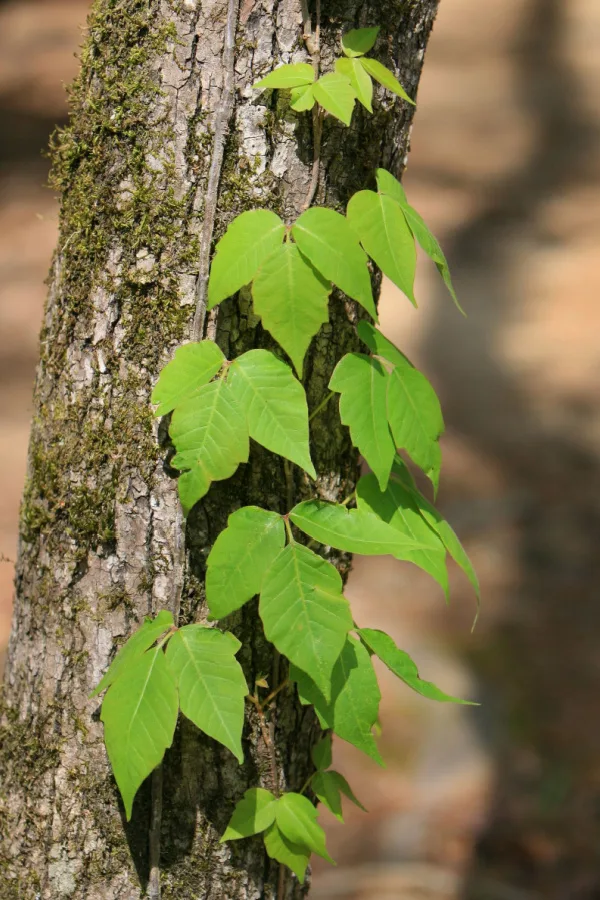
If you are someone who is highly sensitive to poison ivy, it is also advised to wear a mask or face protection as well so you don’t accidentally inhale any part of the plant’s sap. Caution goes a long way to staying safe until you can rid your property of poison ivy!
5 Natural Ways To Get Rid Of Poison Ivy Plants
Poison ivy is very easy to identify due to its “leaves of three” growing habit. Most ivy plants will feature a reddish center where the three leaves meet together. During the fall months, the foliage will turn bright red as it starts to die back.
One of the best times to remove poison ivy is in the spring. Not only is the plant not as strong yet, the longer you wait to remove the poisonous plants, the higher chance there is of them multiplying and spreading, causing even more of a headache later on.
With getting rid of your poison ivy in mind – here are five simple and effective ways of getting rid of poison ivy plants – safely!
#1 Removing The Entire Plant
The best way to get rid of poison ivy plants is to remove the entire plant – roots and all.
Poison ivy plants have rather problematic root systems to work with. This is because they put out tons of tiny fibrous roots all over. Not only can the roots spread under the ground, but they can also turn into aerial roots and climb up trees, posts, and other vertical structures.
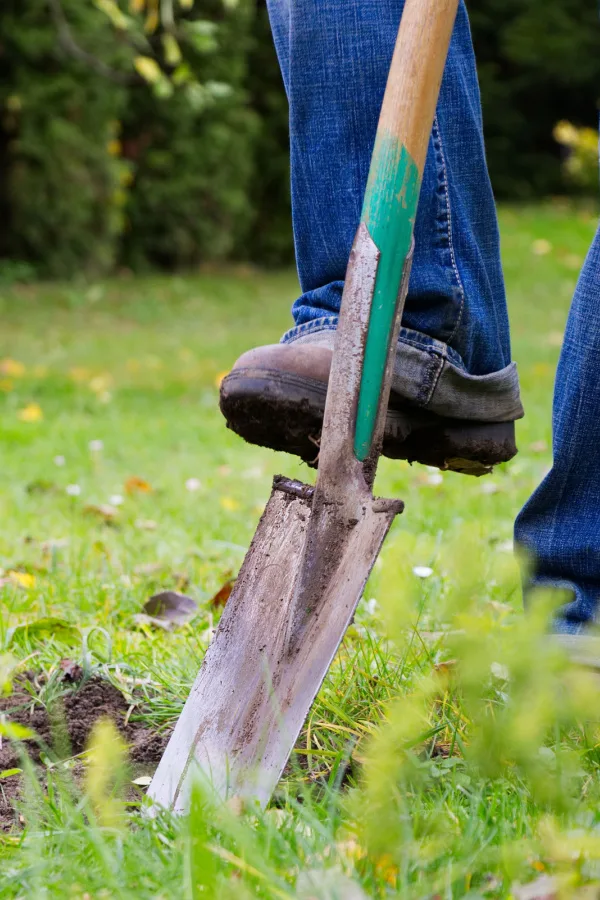
You can attempt to pull plants up from the ground. However, not only do you have to be in extremely close contact with the plant tissue, you are also not likely to get all of the roots by simply pulling. Because of that, you are better off using a shovel to dig up the plant and roots in their entirety.
First, begin by carefully cutting all of the foliage off close to the soil line. Dispose of everything in a bag or another safe container. Next, use a shovel to dig a circle about twelve inches around the base of each plant. Dig about eight to ten inches deep as well.
If any roots still remain in the ground, continue to dig a couple of inches at a time. Repeat until they all come up freely. Any roots left behind can regenerate and grow into new plants, so removing them is the ultimate key to success.
Lift the plant and the roots with the shovel and dispose of them in a bag. Do not shake off attached soil, nor add the plant to your compost pile or burn it. This keeps you entirely safe from the plant. And, from it spreading again!
#2 Boiling Water – Natural Ways To Get Rid Of Poison Ivy Plants
Boiling water is a great way to get rid of many different unwanted plants on your property, and that includes poison ivy. (See “How To Kill Weeds In Driveways and Sidewalks – Without Chemicals”
This method, while it works, will take a few applications before you completely kill off the poison ivy plant and its roots. However, it is one of the easiest to do and wont harm nearby plants.
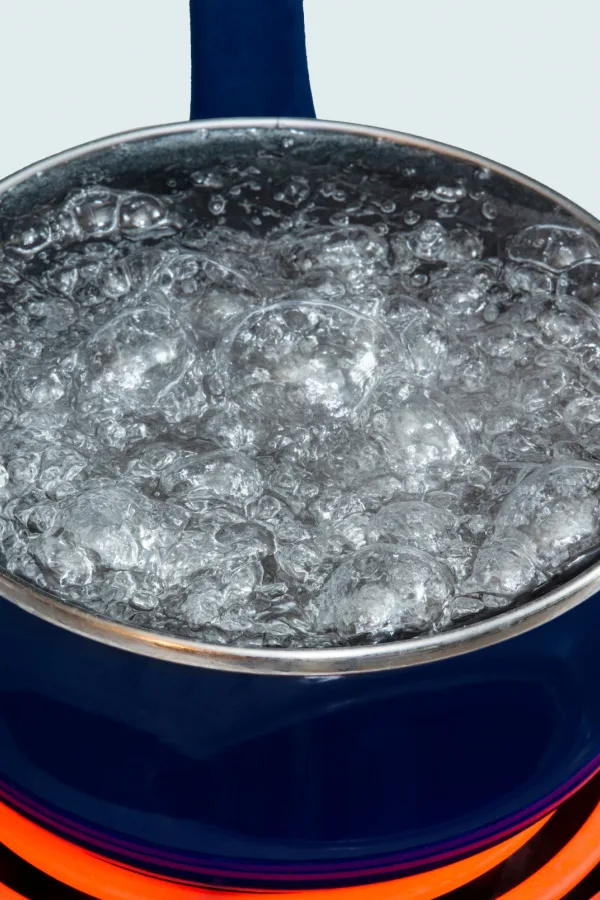
Choose a heat-safe tea kettle, stock pot, or other container. You will want to use a funnel if the container does not have a spout or pouring area to make applying the boiling water easy.
Fill the container with water and bring it to a boil over your heat source. Once the water is at a rolling boil, take it and carefully pour it over the crown of the plant. Also pour the hot water a few inches around its base. Repeat this process once a day for a few days until the plant starts to wilt and die back.
The plant will eventually die off completely and you can stop the process. All in all, it can usually take four to five applications of boiling water to do the trick for good.
#3 Horticulture Vinegar Spray – How To Get Rid Of Poison Ivy Plants
Vinegar is a great, all-natural product that you can use to kill off poison ivy plants and other unwanted weeds. However, you will have much better results if you use horticulture vinegar.
Horticultural vinegar has a stronger concentration of acid compared to regular household vinegar. Instead of having a typical 5% acidity level, the acidity levels of horticulture vinegar are between 30 to 45%. (Product Link: Calyptus 45% Pure Concentrated Vinegar)
Since horticulture vinegar has a very high level of acid, care should be taken to protect your skin and eyes. In addition, you will need to protect your plants from the nearby spray. Placing a simple piece of cardboard in front of plants you are trying to protect is usually enough to keep them safe from over spray from the vinegar.
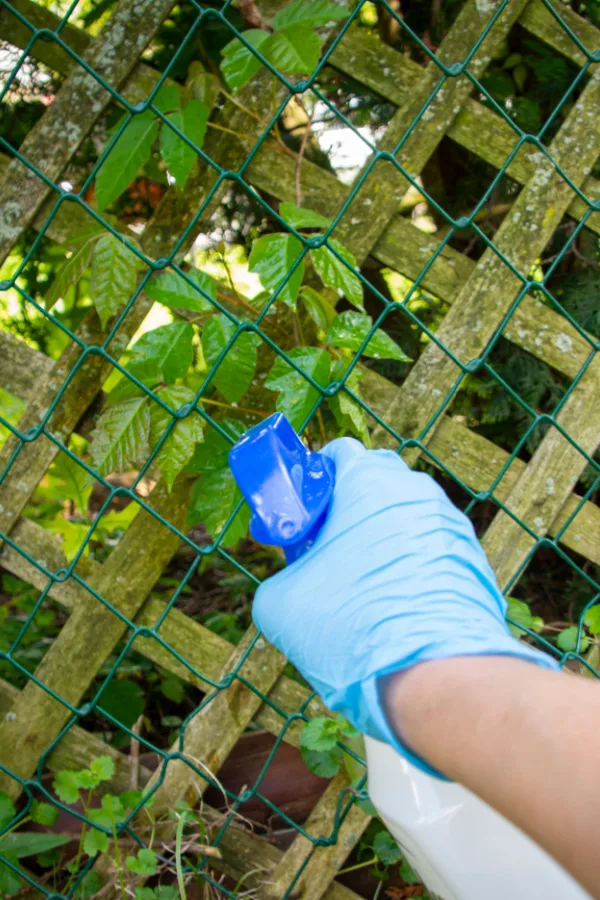
Large shrubs and trees will not be affected by the spray and do not need extra protection. Although some of their foliage that comes into direct contact with the spray might become damaged, they will survive.
To use, simply add the horticulture vinegar to a spray bottle and completely soak the poison ivy plants. Do not dilute as the full strength of the vinegar is needed to kill the ivy plant. Stubborn plants might need a couple of applications.
#4 Homemade Salt & Soap Spray – 5 Natural Ways To Get Rid Of Poison Ivy Plants
If you are unable to find horticulture spray, you can create your own homemade poison ivy spray. This recipe uses salt, water and soap, which are items you likely already have on hand.
For every one gallon of water, dissolve 1 to 2 pounds of regular table salt. To this liquid, add a quarter cup of dish soap. Mix well and add to a clean handheld sprayer. You can use a bigger garden sprayer for larger applications.
Spray the poison ivy plant’s foliage thoroughly with the mixture. You will likely need to reapply a couple of times for best results. This can affect nearby plants, so use with caution and keep confined to the foliage of the ivy.
#5 Suffocating Poison Ivy – Natural Ways To Get Rid Of Poison Ivy Plants
If you are someone who is highly allergic to poison ivy, smothering the ivy out might be the best option of all. This option takes the longest before plants are killed, but it will be effective for large areas with the least amount of work required.
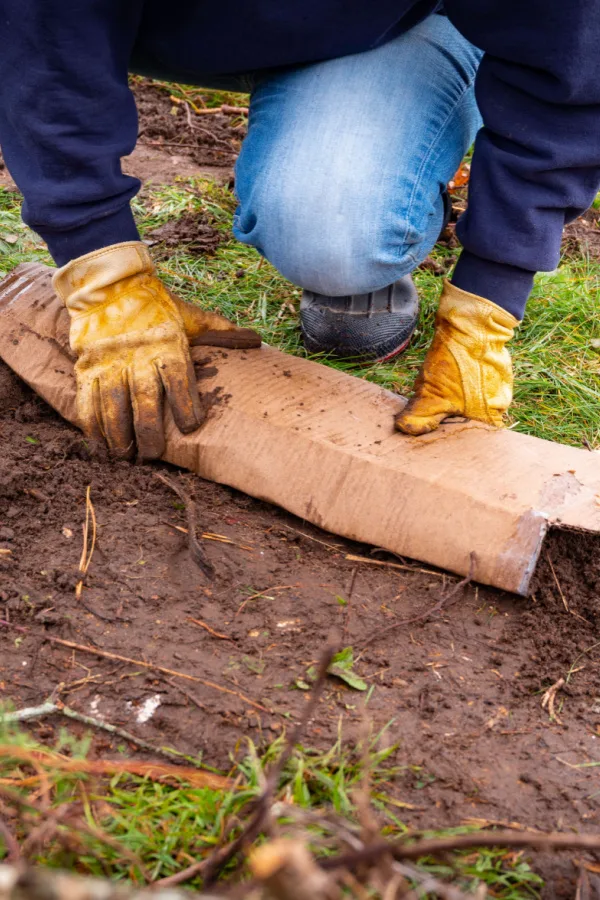
You can use either thick cardboard pieces, plastic tarps, or any material that will prevent air, water, and light from reaching the soil below. Weigh the cardboard or tarps down with heavy bricks or other items. Be sure there is little space between the soil and the coverings.
It is best to extend the coverage space several inches from the visible plants. This is because poison ivy plants can put out runners that will sprout nearby. Allow the cardboard or plastic tarps to stay in place for at least six to eight weeks. Always ensure that there is no green growth before removing completely.
Washing Up After Working With Poison Ivy
No matter the method you choose, whenever you are working around poison ivy, always wash your hands and skin well after with soap and hot water. There are soap products that are specifically for removing urushiol (the poisonous sap that causes the reactions to a human’s skin).
Also, be sure to wash all clothing separately with soap and use hot water. (Product Link: Tecnu Original Poison Oak & Ivy Outdoor Skin Cleanser) All tools and equipment used when getting rid of the poison ivy plants should be cleaned as well.
Here is to getting rid of your poison ivy plants for good without turning to harsh chemicals and herbicides – and get back to enjoying your property without the worry of painful rashes!
Follow Our Facebook Page For Even More Great Tips! Simple Garden Life Facebook Page
Simple Garden Life is a website dedicated to keeping gardening fun, simple and enjoyable! We publish two new articles each week along with a new garden podcast episode every two weeks. This article may contain affiliate links.
